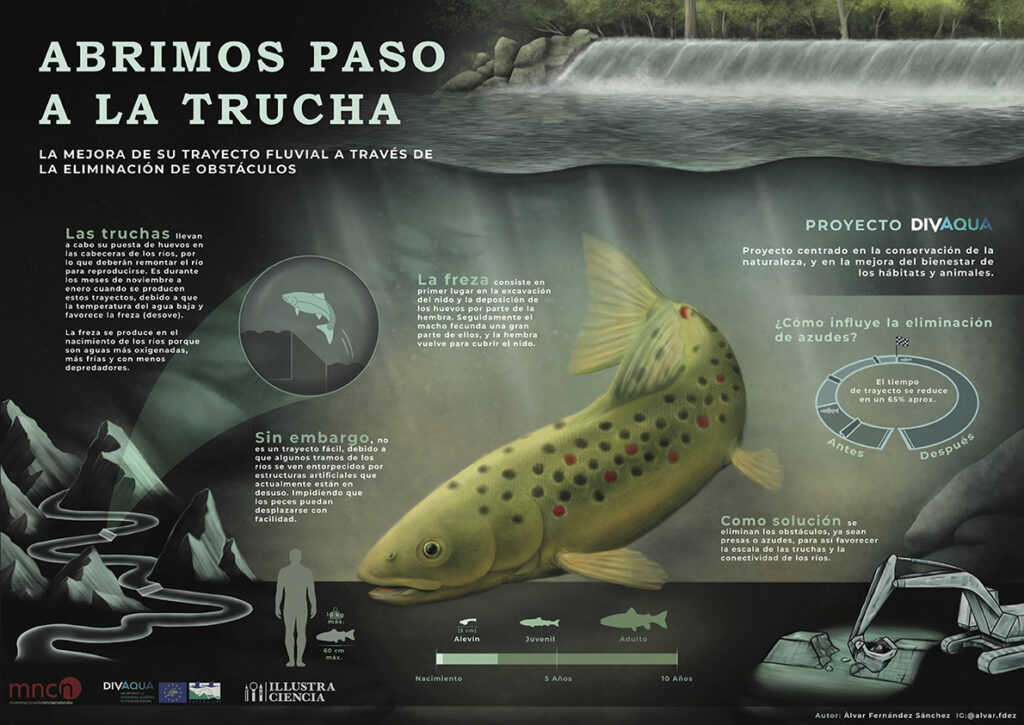MAKE WAY FOR THE TROUT
Improvement of its journey upriver through the removal of barriers

The trout lay their eggs in the river headwaters and therefore have to go upriver to reproduce. These journeys take place from November to January, when the water temperature drops and is more favourable for spawning.
Spawning takes place in the river headwaters because the waters are more oxygenated, colder and have fewer predators.
Spawning firstly involves the excavation of the nest and laying of the eggs by the female. The male then fertilises a large part of them before the female returns to cover up the nest.
The solution is to remove the barriers, whether they are dams or weirs, in order to improve the trout ladder and river connectivity.
Divaqua Project
A project focused on nature conservation and improving the wellbeing of habitats and animals.
What effect does the removal of weirs have?
The journey time is reduced by approximately 65%.